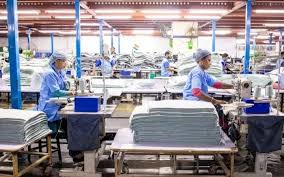
The Ministry of Industry (Kemenperin) has highlighted a paradox occurring in the upstream textile industry, particularly within the Indonesian Fiber and Filament Yarn Producers Association (APSyFI). Despite frequently urging the government to tighten import restrictions, several association members are listed as major importers of textile raw materials.
According to the National Industrial Information System (SIINas), only 15 of the 20 APSyFI member companies regularly report their industrial activities, while the other five do not submit any reports at all. This lack of transparency is considered to undermine the association's credibility. Ironically, yarn and fabric imports by APSyFI members have recorded a sharp 239% year-on-year increase, from 14.07 million kilograms in 2024 to 47.88 million kilograms in 2025. Some companies even utilize bonded zone facilities and General Importer Identification Numbers (API) to import large quantities of goods.
"On the one hand, they demand protection. But on the other hand, they actively become importers. This clearly contradicts the spirit of industrial independence," asserted Febri Hendri Antoni Arief, spokesperson for the Ministry of Industry, on Sunday (August 24th).
The government itself has provided various forms of protection to the upstream industry, ranging from Anti-Dumping Import Duty (BMAD) on Polyester Staple Fiber, which is valid until 2027, BMAD on Spin-Drawn Yarn until 2025, and Safeguard Import Duty (BMTP) on synthetic yarn and fabric, which is valid until 2026–2027. However, this protection is considered not accompanied by technological modernization or new investment from the industry.
The Ministry of Industry emphasizes that all protection and import policies are formulated with the principle of fairness, ensuring balanced growth between upstream, intermediate, and downstream sectors. The proposed BMAD of up to 45% is considered to risk layoffs for 40,000 workers in the downstream industry, while potential layoffs in the upstream sector can still be mitigated by increasing local absorption.
Although the textile sector recorded positive growth of more than 4% in the first and second quarters of 2025, the Ministry of Industry believes this momentum can only be maintained through collaboration and compliance. "What's needed now is synergy and shared commitment, not contradictions that would actually harm the industry," Febri concluded.
